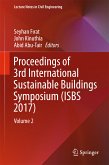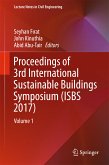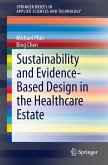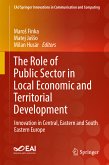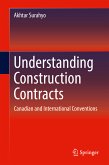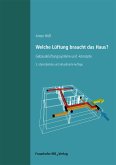Embodied Carbon in Buildings (eBook, PDF)
Measurement, Management, and Mitigation
Redaktion: Pomponi, Francesco; Moncaster, Alice; de Wolf, Catherine
128,95 €
128,95 €
inkl. MwSt.
Sofort per Download lieferbar

64 °P sammeln
128,95 €
Als Download kaufen

128,95 €
inkl. MwSt.
Sofort per Download lieferbar

64 °P sammeln
Jetzt verschenken
Alle Infos zum eBook verschenken
128,95 €
inkl. MwSt.
Sofort per Download lieferbar
Alle Infos zum eBook verschenken

64 °P sammeln
Embodied Carbon in Buildings (eBook, PDF)
Measurement, Management, and Mitigation
Redaktion: Pomponi, Francesco; Moncaster, Alice; de Wolf, Catherine
- Format: PDF
- Merkliste
- Auf die Merkliste
- Bewerten Bewerten
- Teilen
- Produkt teilen
- Produkterinnerung
- Produkterinnerung

Bitte loggen Sie sich zunächst in Ihr Kundenkonto ein oder registrieren Sie sich bei
bücher.de, um das eBook-Abo tolino select nutzen zu können.
Hier können Sie sich einloggen
Hier können Sie sich einloggen
Sie sind bereits eingeloggt. Klicken Sie auf 2. tolino select Abo, um fortzufahren.

Bitte loggen Sie sich zunächst in Ihr Kundenkonto ein oder registrieren Sie sich bei bücher.de, um das eBook-Abo tolino select nutzen zu können.
Provides a comprehensive, up-to-date guide to embodied carbon calculation and reduction in built environments
Includes numerous case studies of real buildings of various sizes and uses
Reflects various authoritative guidelines and standards, including those from the US Green Building Council and UK Green Building Council
- Geräte: PC
- ohne Kopierschutz
- eBook Hilfe
- Größe: 12.03MB
Andere Kunden interessierten sich auch für
![Proceedings of 3rd International Sustainable Buildings Symposium (ISBS 2017) (eBook, PDF) Proceedings of 3rd International Sustainable Buildings Symposium (ISBS 2017) (eBook, PDF)]() Proceedings of 3rd International Sustainable Buildings Symposium (ISBS 2017) (eBook, PDF)272,95 €
Proceedings of 3rd International Sustainable Buildings Symposium (ISBS 2017) (eBook, PDF)272,95 €![Proceedings of 3rd International Sustainable Buildings Symposium (ISBS 2017) (eBook, PDF) Proceedings of 3rd International Sustainable Buildings Symposium (ISBS 2017) (eBook, PDF)]() Proceedings of 3rd International Sustainable Buildings Symposium (ISBS 2017) (eBook, PDF)312,95 €
Proceedings of 3rd International Sustainable Buildings Symposium (ISBS 2017) (eBook, PDF)312,95 €![Integration of Nature and Technology for Smart Cities (eBook, PDF) Integration of Nature and Technology for Smart Cities (eBook, PDF)]() Anil AhujaIntegration of Nature and Technology for Smart Cities (eBook, PDF)112,95 €
Anil AhujaIntegration of Nature and Technology for Smart Cities (eBook, PDF)112,95 €![Sustainability and Evidence-Based Design in the Healthcare Estate (eBook, PDF) Sustainability and Evidence-Based Design in the Healthcare Estate (eBook, PDF)]() Michael PhiriSustainability and Evidence-Based Design in the Healthcare Estate (eBook, PDF)40,95 €
Michael PhiriSustainability and Evidence-Based Design in the Healthcare Estate (eBook, PDF)40,95 €![The Role of Public Sector in Local Economic and Territorial Development (eBook, PDF) The Role of Public Sector in Local Economic and Territorial Development (eBook, PDF)]() The Role of Public Sector in Local Economic and Territorial Development (eBook, PDF)72,95 €
The Role of Public Sector in Local Economic and Territorial Development (eBook, PDF)72,95 €![Understanding Construction Contracts (eBook, PDF) Understanding Construction Contracts (eBook, PDF)]() Akhtar SurahyoUnderstanding Construction Contracts (eBook, PDF)88,95 €
Akhtar SurahyoUnderstanding Construction Contracts (eBook, PDF)88,95 €![Welche Lüftung braucht das Haus?. (eBook, PDF) Welche Lüftung braucht das Haus?. (eBook, PDF)]() Anton HößWelche Lüftung braucht das Haus?. (eBook, PDF)39,00 €
Anton HößWelche Lüftung braucht das Haus?. (eBook, PDF)39,00 €-
-
-
Provides a comprehensive, up-to-date guide to embodied carbon calculation and reduction in built environments
Includes numerous case studies of real buildings of various sizes and uses
Reflects various authoritative guidelines and standards, including those from the US Green Building Council and UK Green Building Council
Includes numerous case studies of real buildings of various sizes and uses
Reflects various authoritative guidelines and standards, including those from the US Green Building Council and UK Green Building Council
Dieser Download kann aus rechtlichen Gründen nur mit Rechnungsadresse in A, B, BG, CY, CZ, D, DK, EW, E, FIN, F, GR, HR, H, IRL, I, LT, L, LR, M, NL, PL, P, R, S, SLO, SK ausgeliefert werden.
Produktdetails
- Produktdetails
- Verlag: Springer International Publishing
- Seitenzahl: 512
- Erscheinungstermin: 28. Januar 2018
- Englisch
- ISBN-13: 9783319727967
- Artikelnr.: 52943258
- Verlag: Springer International Publishing
- Seitenzahl: 512
- Erscheinungstermin: 28. Januar 2018
- Englisch
- ISBN-13: 9783319727967
- Artikelnr.: 52943258
- Herstellerkennzeichnung Die Herstellerinformationen sind derzeit nicht verfügbar.
Dr Francesco Pomponi is the Vice Chancellor's Research Fellow at the Institute for Sustainable Construction of Edinburgh Napier University. Francesco's expertise lies with life cycle assessment, embodied carbon, and circular economy and he moved to academia after six years in industry as an engineer and project manager. He is part of the newly launched Annex 72 of the International Energy Agency and has recently chaired the 'Life Cycle Assessment and Carbon Accounting' Forum of the International Passive and Low Energy Architecture conference and the 'Design for Sustainability' Track of the International Sustainable Development Research Society conference. He is a Fellow of the RSA, a member of the IET, and an Associate Fellow of the HEA. An associate member of St Edmund's College University of Cambridge and of Cambridge Architectural Research (CAR), Francesco regularly collaborates with practitioners and researchers from South and Central America, South Africa, Europe, and ofcourse the UK. Dr Catherine De Wolf is a Postdoctoral Fellow at the Swiss Federal Institute of Technology in Lausanne (Ecole Polytechnique Fédérale de Lausanne, EPFL) cofounded by the Marie Sklodowska-Curie Postdoctoral Fellowships from the European Commission and a Swiss Government Excellence Scholarship, where she works on low carbon structural design within the Structural Xploration Lab. She also worked as a researcher at the University of Cambridge while obtaining her PhD in Building Technology at the Massachusetts Institute of Technology (MIT), after studying both civil engineering and architecture at the Vrije Universiteit Brussel and Université Libre de Bruxelles. She closely collaborated with leading engineering firms including Arup, Ney & Partners, and Thornton Tomasetti on embodied carbon assessment in buildings. This led to her nomination on the board of the Carbon Leadership Forum and the launch of the Structural Engineers 2050 Commitment Initiative. Dr Alice Moncaster is a Senior Lecturer in Engineering at the Open University. She remains a Visiting Fellow at the University of Cambridge, where she was previously a Lecturer in Engineering and Director of the IDBE masters course, and a Fellow of Newnham College. The move to academia followed ten years in industry as a civil/structural engineer, during which time she became increasingly concerned about the responsibility of the construction sector for climate change. Alice's research focuses on reducing the ecological impacts of the built environment. She led the research group Cambridge University Built Environment Sustainability (CUBES) as part of the Centre for Sustainable Development at Cambridge between 2010-17, and has been the UK participating expert on the International Energy Agency Annex 57, and now Annex 72, since 2012.
Part I - Measurement.- Uncertainty Analysis in Embodied Carbon Assessments: What Are the Implications of its Omission?.- Probabilistic approaches to the measurement of embodied carbon in buildings.- Uncertainty Assessment of Comparative Design Stage Embodied Carbon Assessments.- Embodied Carbon of Wood and Reinforced Concrete Structures Under Chronic and Acute Hazards.- Embodied Carbon of Surfaces: Inclusion of Surface Albedo Accounting in Life Cycle Assessment.- Quantifying Environmental Impacts of Structural Material Choices Using Life Cycle Assessment: A Case Study.- Analysis of Embodied Carbon in Buildings Supported by a Data Validation System.- Part II - Management.- Embodied Carbon Tools for Architects and Clients Early in The Design Process.- Embodied Carbon Research and Practice: Different Ends and Means or a Third Way.- Embodied Carbon in Construction, Maintenance and Demolition in Buildings.- Carbon and Cost Hotspots: An Embodied Carbon Management Approach During Early Stages of Design.- Part III - Mitigation.- Applying circular economic principles to reduce embodied carbon.- Embodied Carbon of Sustainable Technologies.- Accounting for Embodied Carbon Emissions in Planning and Optimisation of Transport Activities During Construction.- Design Strategies for Low Embodied Carbon in Building Materials.- Embodied Carbon of Tall Buildings: Specific Challenges.- Part IV - Approaches Across Global Regions.- Managing Embodied Carbon in Africa Through a Carbon Trading Scheme.- Embodied carbon in buildings: an Australian perspective.- Current approaches for embodied carbon assessment of buildings in China: An overview.- Embodied carbon measurement, mitigation and management within Europe, drawing on a cross-case analysis of 60 building case studies.- Initiatives to Report and Reduce Embodied Carbon in Buildings in North America.- Embodied and Life Cycle Carbon Assessment of Buildings in Latin America - State-of-the-art and Future Directions.- Index.
Part I - Measurement.- Uncertainty Analysis in Embodied Carbon Assessments: What Are the Implications of its Omission?.- Probabilistic approaches to the measurement of embodied carbon in buildings.- Uncertainty Assessment of Comparative Design Stage Embodied Carbon Assessments.- Embodied Carbon of Wood and Reinforced Concrete Structures Under Chronic and Acute Hazards.- Embodied Carbon of Surfaces: Inclusion of Surface Albedo Accounting in Life Cycle Assessment.- Quantifying Environmental Impacts of Structural Material Choices Using Life Cycle Assessment: A Case Study.- Analysis of Embodied Carbon in Buildings Supported by a Data Validation System.- Part II - Management.- Embodied Carbon Tools for Architects and Clients Early in The Design Process.- Embodied Carbon Research and Practice: Different Ends and Means or a Third Way.- Embodied Carbon in Construction, Maintenance and Demolition in Buildings.- Carbon and Cost Hotspots: An Embodied Carbon Management Approach During Early Stages of Design.- Part III - Mitigation.- Applying circular economic principles to reduce embodied carbon.- Embodied Carbon of Sustainable Technologies.- Accounting for Embodied Carbon Emissions in Planning and Optimisation of Transport Activities During Construction.- Design Strategies for Low Embodied Carbon in Building Materials.- Embodied Carbon of Tall Buildings: Specific Challenges.- Part IV - Approaches Across Global Regions.- Managing Embodied Carbon in Africa Through a Carbon Trading Scheme.- Embodied carbon in buildings: an Australian perspective.- Current approaches for embodied carbon assessment of buildings in China: An overview.- Embodied carbon measurement, mitigation and management within Europe, drawing on a cross-case analysis of 60 building case studies.- Initiatives to Report and Reduce Embodied Carbon in Buildings in North America.- Embodied and Life Cycle Carbon Assessment of Buildings in Latin America - State-of-the-art and Future Directions.- Index.
"This book is to be welcomed because it brings together a wealth of new knowledge and makes a compelling case for the inclusion of embodied carbon into our thought processes, calculations, practices and governance. It is essential reading and highly recommended to anyone who is serious about reducing the carbon footprint of buildings." (Antonin Lupisek, Buildings & Cities, March 30, 2020)

